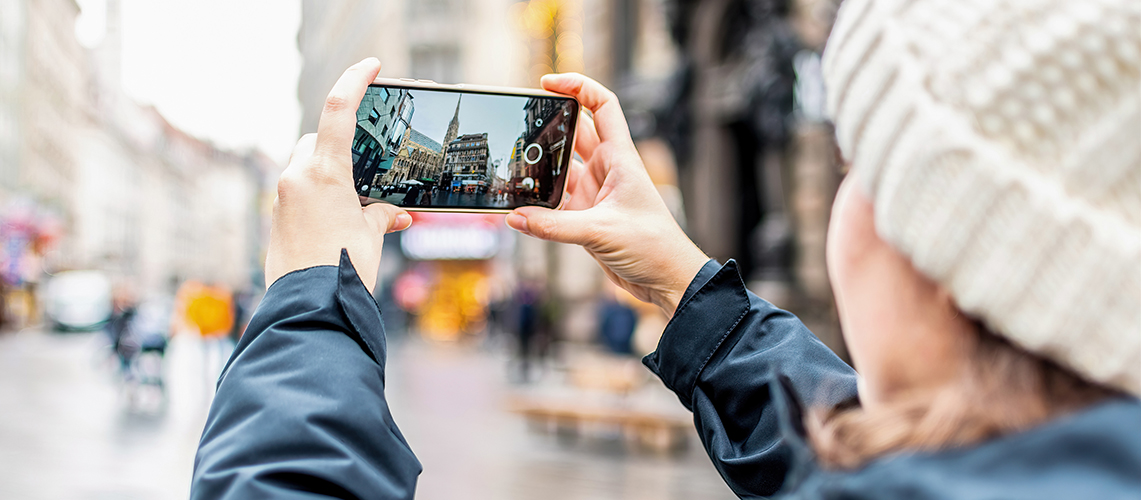 A person making a video with a mobile phone.
A person making a video with a mobile phone.As a breeze stirs, flowers bloom and birds sing, with a good mood, do you feel like scrolling through your phone to admire the latest snapshots of roses and ladybirds, or perhaps sipping a glass of orange juice while watching a movie on your computer? One thing is certain: in an era dominated by digital images, social media videos and AI-generated visuals, traditional research methods can struggle to keep up.
How do we make sense of the visual world around us? How can we ethically and effectively use photography, video and film in research? My new course, Visual Research Methods: Photography, Video-analysis and Film, is designed to help learners explore these questions, offering theoretical insights and hands-on experience in working with visual data.
From photographs to participatory research
Photography has long been a powerful tool for research, allowing us to document and interpret human experiences, social phenomena, and big nature and environments. In this course, with my attendees, I explore participatory photography, with creative visual participatory methods like mental mapping and playing with stickers, an approach that gives research participants the ability to tell their stories through images.
This method is used in contextual behaviour studies and community-based research especially for the socially vulnerable and minority, providing researchers with deep, personal insights into lived experiences. However, with this power comes responsibility. Ethical dilemmas such as consent, representation and ownership of images need careful evaluation. How do we ensure that participants retain agency over their narratives? What happens when images are shared beyond their original context? We explore these critical questions through real-world case studies and interactive discussions.
Using a multi-dimensional approach to video analysis
In today's digital landscape, video is more than a record of events but a complex, interactive medium. Traditional video analysis methods focus on context, interaction or narrative structure, but this course expands the approach to include online ethnography. With the rise of live streaming and interactive video content, it is no longer enough to analyse a video or scene in isolation.
We consider for example how audiences engage with the content visually, auditorily and atmospherically, from chat interactions in a livestream to comment threads on video platforms. Who is watching? How do they respond in real time? What power dynamics emerge in these digital spaces? Examining video as both a visual and social phenomenon, students can learn and reflect on how to conduct richer, multi-layered analyses.
The role of generative AI in visual research
As AI-generated images and deepfake videos become more prevalent, researchers must confront new challenges in visual analysis. How do we differentiate between authentic and AI-generated content? What ethical concerns arise when AI is used to create or analyse visual narratives?
This course incorporates generative AI in our exploration of visual research, not just as a tool for creating images but as a subject of critical inquiry. We examine how AI shapes the way we perceive and interpret visual data and discuss the ethical implications of AI-generated visuals in social science and humanities research.
Film as research and storytelling
Beyond analysis, visual research is also about storytelling. Film is incredibly powerful for disseminating research findings and engaging wider audiences. But how do we craft compelling narratives while maintaining academic integrity?
In this course, we explore film creation and promotion as research tools, learning how to structure a research-driven film, integrate interviews and observational footage, and consider practical and ethical topics, for example interrupting participants’ ordinary lives and the extent to which private spaces can be videoed in filmmaking. We also discuss strategies for promoting research films to different audiences, from academic conferences to social media platforms.
Why visual research matters more than ever
In a world saturated with images and videos, the ability to critically engage with visual content is important. Whether you are a researcher looking to integrate visual methods into your work, a filmmaker interested in academic storytelling or simply curious about the evolving role of visuals in society, this course provides a dynamic, interactive and thought-provoking introduction and reflection to visual research methods. Join us to explore the fascinating intersection of photography, video analysis, film, AI and online ethnography, and learn how to use the power of visuals in research and storytelling.
This module, which I delivered for NCRM earlier this year, will be part of Scottish Graduate School for Arts & Humanities summer school in June 2025. I also plan to deliver it next academic year for the University of Cambridge.

